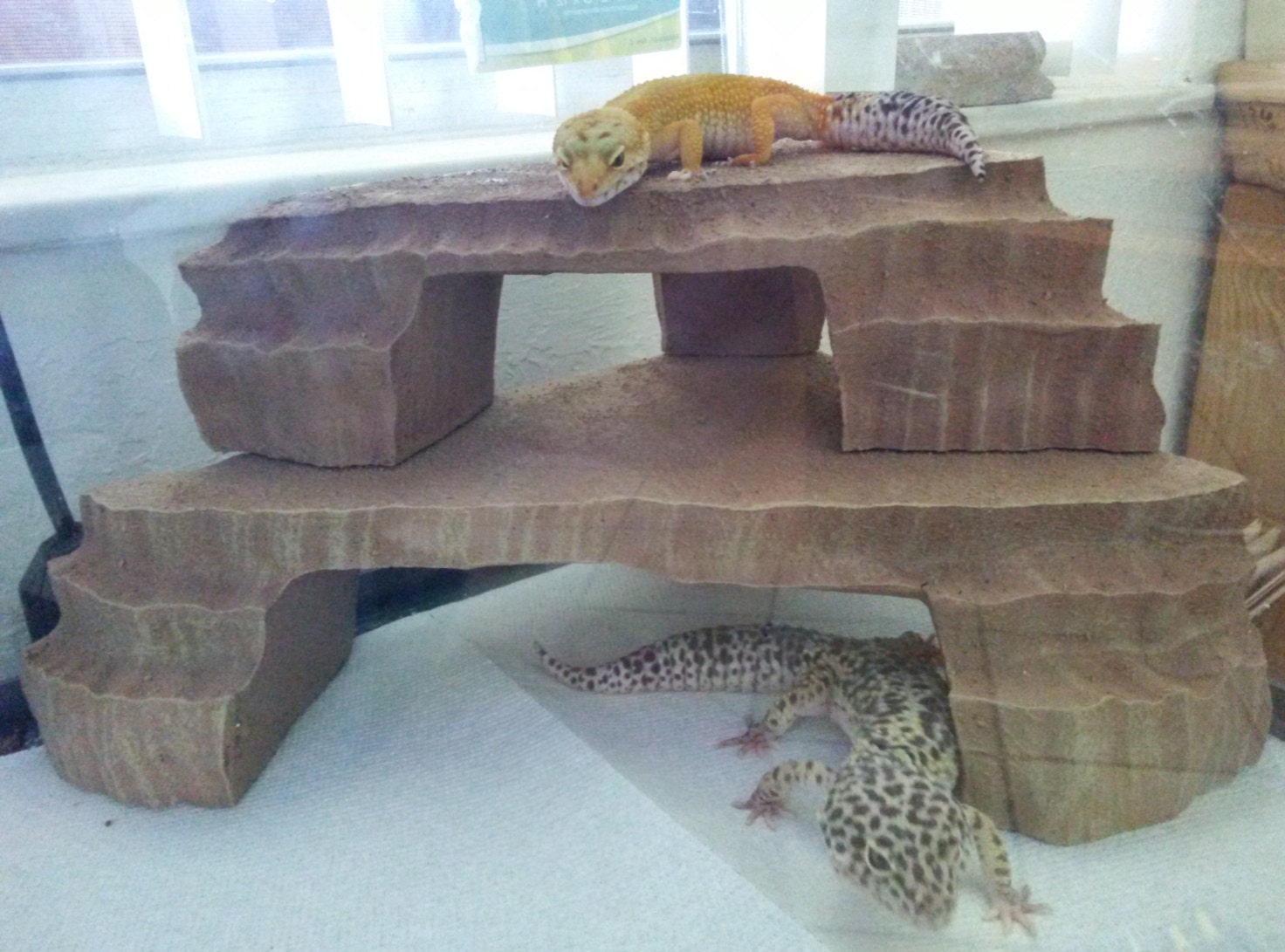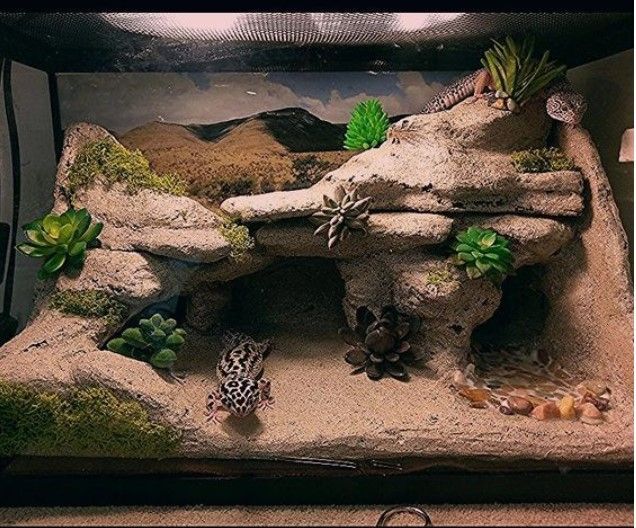

Leopard gecko hides diy skin#
Without it, the old skin will be difficult to pull off, which can cause it to get stuck. To make this process easier, adequate humidity and moisture are needed. Once ready, in between the two layers of skin, a layer of lymph fluid is built up to further separate the old skin, so it can be more easily pulled off by the gecko. Sheddingĭuring shedding, the old skin is slowly separated from the new skin, forcing it to dry out while the new skin is developed. The key is self-regulation: just like Leopard Geckos need the option to drink if needed, they must have the option to retreat into a moist cave if they need more moisture in their skin and body. They may only actually drink once every few days with adequate moisture supply from the environment and feeder insects. Leopard Geckos, like many reptiles, are cold-blooded, and rely on their environment for regulating both temperature and hydration. Much of a Leo’s hydration actually comes from food and environment, and only a small part is from directly drinking water. (i cover the opening with flowers so she feels more hidden, you can always tape some paper over the top half if you prefer to do that :relaxed: )Īlways take caution when DIYing your own accessories for your gecko, take precautions and if you notice something wrong take the hide out asap.Īlways think of your geckos health over how their tank looks.Humid hides are critical for Leopard Gecko for two reasons: keeping hydrated and for shedding. My gecko loves these hides because newspaper is really good at holding in heat and she (obviously ) loves being warm. WARNING: these hides are not great for humid hides, unless you’re willing to replace them every few weeks as spraying them repeatedly can cause them to break apart or harbour bacteria. You can stick on coloured paper, fake plants, eco earth, whatever! step 6) decorate them or put them straight in your tank! remember if your painting to use animal safe paint and leave them to air out for a few days. they might look dry after a few hours but the inner layers might still be damp and that can mess with the humidity in your hide if they’re not filly dry. step 5) leave them out to dry on a plastic lid or folder next to a window for 1-2 days. Repeat this process until you get your desired thickness! mines usually around 4/5 layers, because my gecko seems to like it to be very warm. step 4) next layer can be done with dry newspaper, you don’t want every layer to have the paste or else it will take ages to dry and might grow bacteria. step 3) cover your first layer of strips completely in the paste, i did this by dipping it into the paste and using a spoon to coat it completely, then used my fingers to scrape off the extra paste back into the cup. step 1) tear newspaper into strips (doesn’t matter length/ thickness, all depends on what jar you want to use / preference) I would recommend tearing your newspaper into strips before you make the paste, as the paste can dry faster than you’d expect Mix well until combined and all lumps are gone It’s essentially papier-mâché on a glass jar, but instead of the actual paste (not sure if it was toxic, didn’t want to risk) i made my own paste with just these three ingredients!ġ/4 tablespoon (about one teaspoon) of table salt

Hides can be pretty expensive, and i’ve got quite a large tank that needed a few extra hides so i decided to DIY a few!

Hey everyone, i posted about this on reddit and it got quite a bit of positive feedback so decided to post here!


 0 kommentar(er)
0 kommentar(er)
